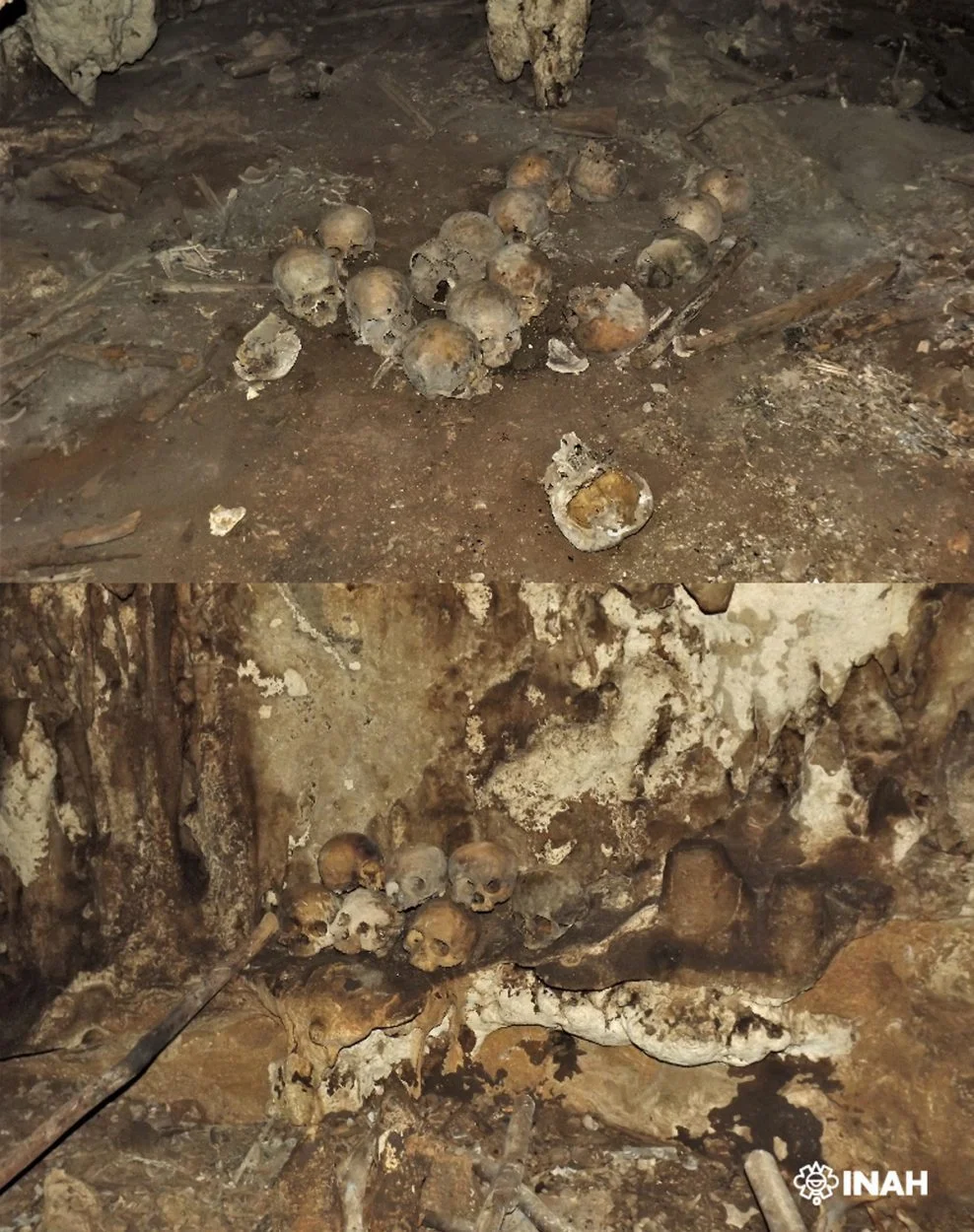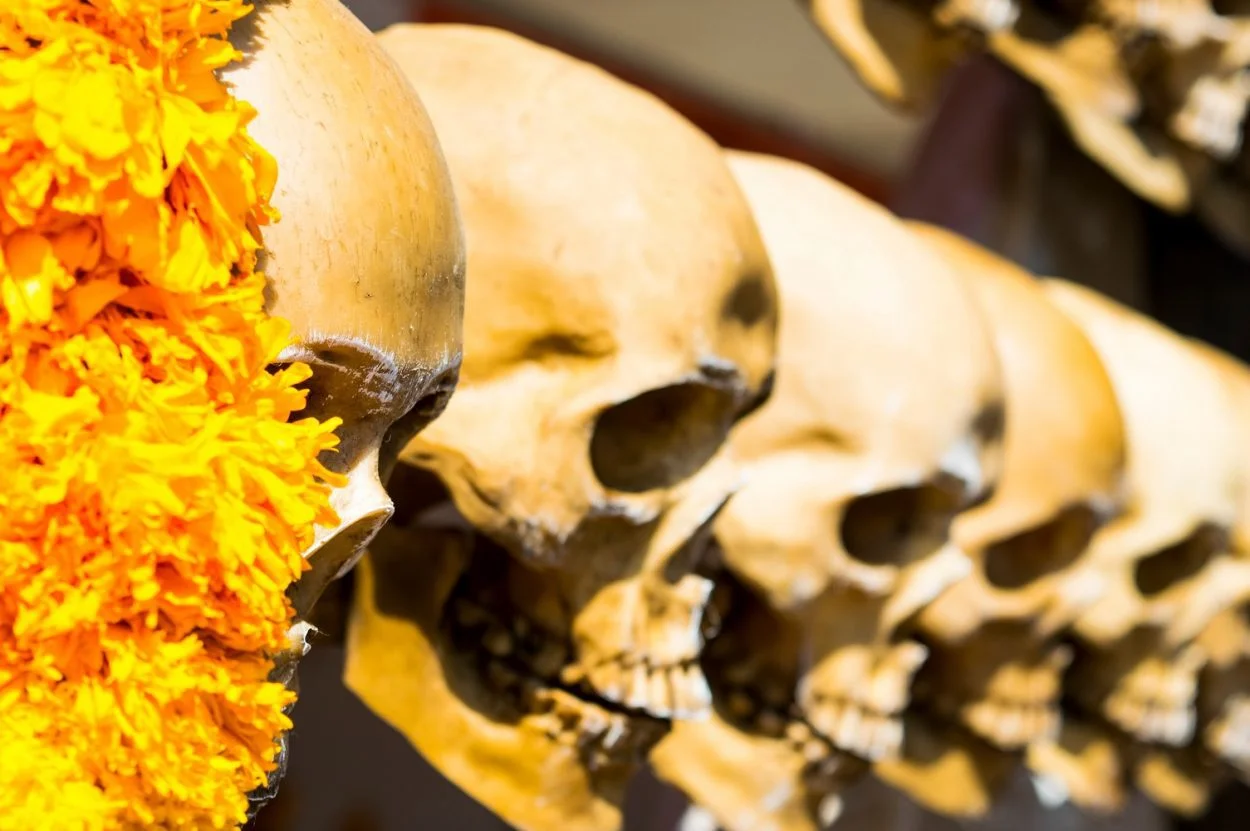Archaeologists suggest that hundreds of decapitated skulls in the Cueva de Comalapa, a cave in Chiapas, Mexico, may have been placed on a tzompantli skull rack.
A tzompantli was a wooden rack or palisade, used for the public display of skulls from war captives or sacrificial victims. They were erected as a linearly arranged series of vertical posts connected by a series of horizontal crossbeams.
The skulls were generally pierced or threaded laterally along these horizontal stakes, although in Maya regions it was also common for skulls to be impaled in stacks along the vertical posts.
The site was first discovered in 2012 when authorities were alerted to what they thought was a horrific crime scene. Working in collaboration with the National Institute of Anthropology and History (INAH), the human remains were removed for a forensic inspection and to determine if they were pre-Hispanic in origin.

A more recent study has determined that the skulls are around 1,000 years old from the Early Postclassic (AD 900 and 1200) and may have been originally placed on a tzompantli.
Although femurs, tibias or radii have been identified, no complete single burials have been found in the cave. This, in addition to evidence of aligned wooden sticks (which over time have since collapsed and disintegrated) support the tzompantli theory.
Anthropologist Javier Montes de Pa from the INAH Chiapas Centre said: “We are yet to determine how many skulls there are, some are very fragmented, but so far we estimate in the range of around 150.
The Comalapa skulls lack the perforations in the parietal and temporal bones (like those of the Huei tzompantli of Tenochtitlan), suggesting the use of altars or structures to fix the skulls without perforating them.”
Header Image Credit : El Coco Velazquez





